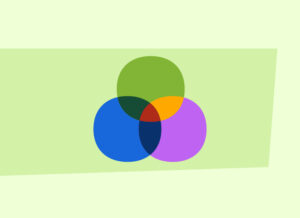Over the past few years, the use of 3D software has become increasingly important in Government Agencies. With advances in technology, government officials are turning to 3D software to help them visualize, analyze, and design projects with greater efficiency and effectiveness. This technology can provide several benefits, including improved collaboration, better decision-making, and increased efficiency.
One of the most significant benefits of 3D software is the ability to create realistic visualizations of data and designs. This is particularly useful in areas such as architecture, urban planning, and transportation. By using 3D software, government agencies can create realistic models of buildings, roads, and other infrastructure, allowing stakeholders to see how designs will look in the real world. This can help to identify potential issues early in the planning process, leading to more efficient and cost-effective solutions.
 For example, a city planning department could use 3D software to create a digital model of a new highway interchange. The model could be used to identify potential traffic bottlenecks, analyze the impact on nearby neighborhoods, and make design modifications to optimize traffic flow and minimize the impact on the community. By using 3D software, the planning department can gain valuable insights into the project and make better decisions that benefit both the city and its residents.
For example, a city planning department could use 3D software to create a digital model of a new highway interchange. The model could be used to identify potential traffic bottlenecks, analyze the impact on nearby neighborhoods, and make design modifications to optimize traffic flow and minimize the impact on the community. By using 3D software, the planning department can gain valuable insights into the project and make better decisions that benefit both the city and its residents.
Another benefit of 3D software is improved collaboration. By creating 3D models of designs and data, government agencies can share information more easily and effectively with stakeholders. This can lead to better communication and a greater understanding of the issues at hand. Additionally, 3D software allows multiple stakeholders to view and interact with the same model, allowing for more efficient collaboration and problem-solving.
For instance, a team of engineers and architects working on a public works project could use 3D software to create a digital model of the project. The model could be shared with all team members, allowing them to see and interact with the same information. This would facilitate better communication and collaboration, as team members could identify potential issues and make design modifications in real time.
3D software can also improve decision-making in government agencies. By visualizing data and designs in 3D, agencies can better understand complex systems and identify potential problems before they occur. This can help agencies to make more informed decisions and avoid costly mistakes. Additionally, 3D software can help agencies to evaluate the impact of different policy decisions, allowing for more effective planning and resource allocation.
For example, a state transportation department could use 3D software to evaluate the impact of a proposed toll increase on highway usage. The department could create a 3D model of the highway system and use data analytics to simulate different traffic scenarios. This would allow them to evaluate the impact of the proposed toll increase and make more informed decisions about transportation policy.
Finally, 3D software can increase efficiency in government agencies. By using 3D software to create models and visualizations, agencies can streamline their workflows and reduce the time and resources required for planning and analysis. This can lead to faster decision-making and more effective use of resources.
For instance, a Federal agency could use 3D software to analyze satellite imagery of a natural disaster area. The software could automatically generate 3D models of the disaster area, allowing the agency to quickly assess the extent of the damage and prioritize response efforts. This would reduce the time required for manual analysis and allow the agency to more efficiently allocate resources.
In conclusion, the use of 3D software in government agencies can provide several benefits, including improved collaboration, better decision-making, and increased efficiency. As technology continues to advance, 3D software will likely become an increasingly important tool for government agencies across a range of fields.
If you or anyone you know would like to dive deeper into the Adobe creative applications and how they can be applied to current government projects, watch the on-demand recordings from our 8-part webinar series, Engage Audiences Across Screens with Powerful Collaboration and Creation.
Discover how Adobe Creative Cloud solutions accelerate creative workflows, allow for content creation across all screens and mediums, and enable quick and efficient creation of digital experiences. Our team of Adobe solutions experts demonstrate how to utilize the newest tools, upgrades, features, and integration capabilities that teams across all fields can leverage for compelling and exciting digital designs.







